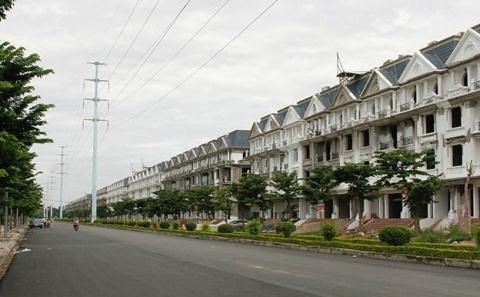 Society
Society

Hà Nội should finalise regulations on construction management to eliminate overlapping responsibilities between agencies, and also to clarify inspection duties to better deter construction violations, experts have said.
 |
| In some suburban districts such as Đông Anh, Hoài Đức, Hoàng Mai, Mê Linh, Mỹ Đức, Nam Từ Liêm, Sóc Sơn, Thanh Trì and Gia Lâm, illegal construction encroaching on public and agricultural land still occurs. — Photo baodatviet.vn |
HÀ NỘI — Hà Nội should finalise regulations on construction management to eliminate overlapping responsibilities between agencies, and also to clarify inspection duties to better deter construction violations, experts have said.
Trần Việt Trung, deputy director of the city’s Department of Construction, said that a shortage of sanctions and the loose management of local authorities have contributed to an increase in construction violations.
In some suburban districts such as Đông Anh, Hoài Đức, Hoàng Mai, Mê Linh, Mỹ Đức, Nam Từ Liêm, Sóc Sơn, Thanh Trì and Gia Lâm, illegal construction encroaching on public and agricultural land still occurs. However, the handling of violations of local authorities remains ineffective and slow.
Some localities delay reporting violations to higher level authorities. Thus, many illegal construction projects are nearly completed before being discovered by authorised agencies, he said.
In May 2013, the city set up construction order management groups, which included inspectors of the Department of Construction, in districts and towns in order to strengthen inspection in localities. However, due to poor co-ordination between the groups and local authorities, the crackdowns were not effective.
In September 2016, the city assigned the chairmen of the people’s committees of districts and towns to directly guide the construction order management groups to deter violations in their localities. But a lack of clarity on the specific duties of inspectors of the city’s department and local authorised agencies resulted in a confusion and poor management.
Violations in the construction of the HH-01 Building in Đại Mỗ Urban Area in Nam Từ Liêm District are an example. In May 2016, the people’s committees of Nam Từ Liêm District, Đại Mỗ Ward and the local construction order management team issued a decision to suspend the construction because the project lacked required licenses.
But construction work continued until January this year, over seven months after the decision was issued. By that time, the building’s 18 stories were complete. Ineffective co-ordination between local authorities and inspection teams contributed to the problem.
Last month, the Government agreed to establish the city’s inspectorate group, which included construction inspectors from districts and towns, as a two-year pilot project. As stipulated, the inspectorate group would be under the management of the district/town people’s committees. The change was expected to improve the efficiency of the crackdown on construction violations.
A representative of the city’s Department of Construction said that the city has assigned authorized agencies to study, complete and issue regulations of the new model, in which responsibilities of the chairmen of district and town people’s committees and supervising inspectors would be clarified.
He also said that it was time to build regulations on co-ordination between relevant authorities and individuals to enhance the implementation of the new model. – VNS









